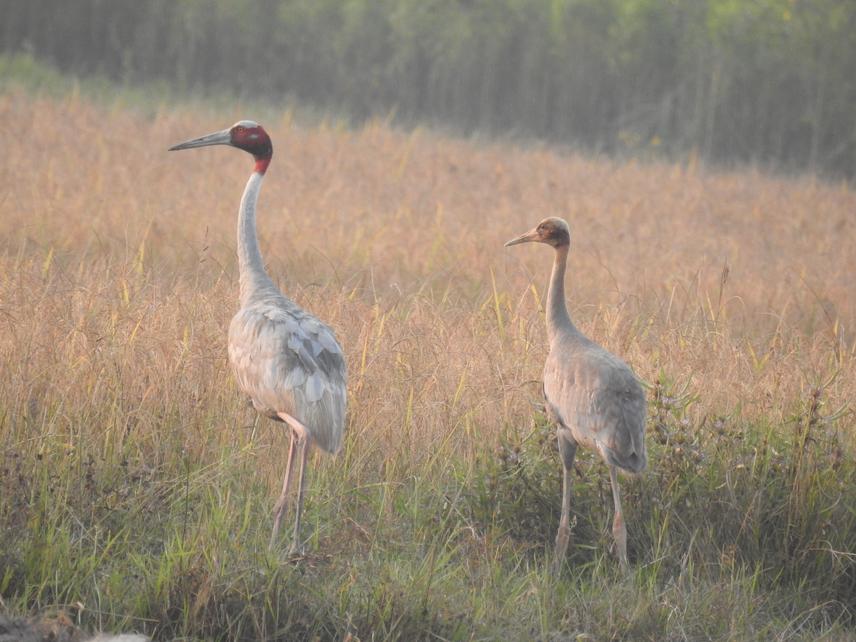Seejan Gyawali
Other projects
28 Mar 2017
Temporal and Spatial Fluctuations in Occurrence of the Vulnerable Sarus Crane (Grus antigone antigone) and their Conservation in the Western Nepal
This project aims to conserve Sarus Crane, the flagship species in Lumbini IBA through continuous ecological monitoring, trainings and awareness rising activities to mitigate their major anthropogenic threats engaging local conservation agencies and local farmers.

Sarus Crane, the world’s tallest flying bird (Archibald et al. 2003), is only resident breeding Crane in India, low land Nepal and Southeast Asia, and has suffered rapid population decline within a few decades (Choudhury et al. 1999). These were once distributed along the entire belt of lowland Nepal from east to west, however, due to anthropogenic impacts such as degradation of wetland habitats as a result of drainage and conversion to agriculture, wetland pollution from pesticides, fertilizers and industrial effluent, and changes in agricultural practices, their range was significantly reduced. Other impacts on this species include nest destruction, hunting of adults, collection of eggs and chicks for trade, food and medicinal purposes, human disturbance and population control where it is considered a crop pest and conflict with farmers in the catchment of the wetlands. These impacts seem likely to continue unless appropriate protection measures are taken (Gole 1989, Meine 1996, Kaur 2003).
This project will monitor the population status, distribution pattern, habitat use and breeding success of Sarus Crane -The globally threatened, Nationally Protected, Flagship Species in Farmlands of Lumbini and Jagdishpur - The World Heritage site, Ramsar site and Important Bird Area (IBA) of Nepal covering 141,367 hectares area of two districts Rupandehi and Kapilvastu involving well trained local neighbouring community in all potential niches of project area. Project will conduct awareness and promotional activities in collaboration with local community based organizations. Project will also develop useful relevant materials with conservation messages and will be distributed in schools and communities for the long-term flow of conservation messages in mass which will contribute in long lasting conservation of not only this flagship species but also another 210 bird species, including eight globally threatened and three Critically Endangered species present in the area (Suwal 2002).